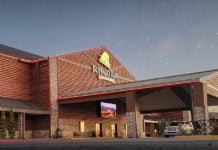by Jeanette Showalter
How much of your training gets out on the casino floor? Can your employees describe their task’s safety procedures? In moving training testing out of the classroom, the focus should be on making learning “stick” and ensuring that training reaches the job itself. The following addresses OSHA’s expectations of your supervisors to:
• Monitor employee safety performance
• Verify training comprehension
• Document required inspection activities
• Ensure supervisor competencies
• Provide location-specific safety training
It takes a significant investment in money and time preparing a trained workforce – from onboarding new hires, new job roles, succession training, to OSHA compliance. But when employees leave the classroom, how can you be sure their training went with them? How do you know that they have put into practice what they learned in class?
The problem many training programs encounter is that after putting so much work into creating training materials and conveying the message, it can be easy to overlook testing. There are pressures to get new employees out of the classroom and out on the job, language challenges, time and financial constraints, and new employees may not know what questions to ask until they actually are doing the job.
Over time, lessons may need to be refreshed for employees as well as their supervisors as new methods and equipment are introduced. What they know and what they practice may bear little resemblance out of practical necessity. It can be a big problem if you aren’t sure that employees are learning and applying what they have been taught. After all, injuries don’t happen in the classroom.
OSHA believes that the end result of effective training is employee knowledge. Inspectors evaluate safety programs by interviewing random employees in private to determine if they have retained the requisite knowledge required. By mimicking OSHA’s own method, you can ascertain if tasks are being performed correctly, safely and consistently. Supervisors ask random challenge questions while they are out on the floor, and employees demonstrate what they have learned – where it counts – on the job.
Classroom training should provide a simple clear statement of what the employee should be able to do when the training is over. It needs to be easy to observe for accuracy. For example, instead of stating “Know what gloves to use,” it is more specific to state, “Correctly identify the proper gloves using the safety data sheet.” It should call for demonstration that is specific enough for anyone observing to determine when the desired result is performed correctly.
Knowing what to do and actually doing it are separate skillsets. To make the most efficient use of time, focus on the tasks that are causing injuries first. Be clear whether your goal is to have trainees describe what they would do, or actually perform it. Obviously, explaining the steps to issue a player’s card may lend itself to recital, where the steps of operating a scissor lift or using a caustic chemical are worthy of practical demonstration.
Matching the questions to elicit on-the-job behavior gives an accurate picture of how thoroughly classroom training has migrated to the job, and frontline supervisors have immediate feedback on expected outcomes.
In most cases, the goal of training is to help employees use what they have learned, not just prove that they can memorize. Task performance calls for finding the necessary equipment, and allows for learning and error correction. Task knowledge, such as reciting the steps to use a fire extinguisher, isn’t useful if employees are unable to locate one.
Examples of other location specific safety knowledge that cannot be taught in a general classroom setting include: equipment usage and inspection; chemical handling and hazards; location of PPE, emergency exits, AEDs, fire alarm boxes, roll down fire doors, eyewash stations, safety data sheets; and department policies, procedures, and required records. It is helpful for all departments to use a checklist of items to cover with new hires. That way, all employees receive the same information.
Employees will be better prepared for on-the-spot interviews if they have had some practice at it. And your supervisors will be the first to know if training objectives are not being met.
People at all levels perform to the extent that they are measured. Employees are quick to figure out what is important to their supervisors.
Where to begin? Providing supervisors with a list of questions from training sessions will begin the process of interviewing employees on the job.Remember, this is a refresher-coaching process. The goal is success with interviewing and confidence with their knowledge.
Sample questions might be, “How do you decide which gloves to use?” “Can you show me where the eyewash is located?” “What are these goggles protecting you from?” “Show me three things you would check to see if this equipment is safe to use.” Notice they are not “yes/no,” “pass/fail” or multiple-choice questions. They require specific explanation and demonstration.
Adults like to solve their own problems, and it is generally less confrontational to pose problems as questions. For example, the main question might be, “What would you do if this stepstool had a broken step?” The coaching questions to the correct responses might be, “Where could you put it for safe keeping?” “Where would you find repair tags?” “Who would you notify?”
Letting two employees figure out the solution together takes some of the stress out of the interview, and doubles your feedback. Having a supervisor stop and ask you about your job validates the importance of your work and your safety, and performing the task correctly is a satisfying experience for both. It is a simple matter to convert an OSHA regulation into training objectives and follow up challenge questions. For example:
OSHA Regulation
Each such employee shall be trained to know:
- When PPE is necessary
- What PPE is necessary
- How to properly don, doff, adjust and wear PPE
- The limitations of PPE
Training & Challenge Questions
Employees will answer/demonstrate:
- When do you wear PPE?
- Why do you wear it?
- What PPE do you wear?
- Show how to properly don, doff, adjust and wear PPE
- What are the limitations of PPE?
Be sure your supervisors allow employees to show what they know. If they aren’t able to answer correctly, refresher coaching can be provided and demonstrated back on the spot, targeting training where it is needed, and avoiding training where it is not.
To refresh the interview process for supervisors, managers can schedule them to interview each other’s employees and exchange findings.
OSHA holds managers accountable for hiring “competent” supervisors. They must be empowered to monitor employee safety, understand the hazards of the tasks, establish consequences and enforce the requirements of the training, from wearing PPE, to proper lifting, just as they enforce compliance with all other company policies and procedures.
As consummate problem solvers, your supervisor’s greatest interviewing challenge will be deferring to employees for answers they should know. They must allow employees to reason the answers out without answering for them. It is especially important to stress that the goal is not fault finding, but to evaluate the employee’s understanding of the training they received. Responses often begin with brief awkward silences but as employees become more confident, the process becomes faster and more accurate, identifying opportunities to improve the effectiveness of the teaching process.
To underscore the importance of the findings and ensure participation, supervisors provide outcomes weekly to their manager. A simple record of whom they contacted, the topic discussed, and follow up action taken is sufficient.
Asking a few employees to stay after each training session to answer a written quiz on the material will reveal areas needing clarification. As a matter of course, supervisors who routinely use this process remain current on existing practices. This is especially valuable for updated processes they may not have performed in some time. OSHA says that managers must ensure that supervisors know correct procedures for all the tasks they oversee to adequately ensure the safety of the employees they are responsible for protecting, and there is no better way to learn than by teaching someone else.
When does OSHA inspect casino properties? Aside from an employee death, or employee complaints, OSHA selects businesses based on the number of injuries they experience. (Yet another reason to keep employees focused on safety). When the rate of your injuries exceeds the national average for the casino industry, you are on the radar for an OSHA inspection. The Bureau of Labor Statistics national average incident rate for non-fatal injuries for the casino industry in 2019 was 4.1.
To calculate your property’s current injury rate, multiply your total 2018 recordable injuries by 200,000 and divide the result by the total number of hours worked by all your employees (including management) for the year. If it exceeds 4.1 you are a potential candidate, and OSHA can randomly select your property for unannounced inspection.
When OSHA does interview employees, one of their frequent challenge questions is “Do you think your employer cares about your safety?” Your employees’ comfort describing their safety performance, and the presence of supervisors on the floor checking and reporting on employee task performance, comprehension, and situational awareness certainly testifies to your safety performance. Should performance inconsistencies exist, the interview ensures that your front line supervisors are the first ones to know.
Should OSHA come to call, your managers will have a selection of knowledgeable employees and supervisors in every department, prepared to speak to their safety responsibilities, with records attesting to the frequency and scope of supervisory inspection and interview activity.
You and OSHA have a common objective – the safety of employees in their physical work locations. For that reason, testing employee safety knowledge as OSHA does, where OSHA does, and before OSHA does, is a dress rehearsal for your success.
Jeanette Showalter is a Health and Safety Advisor with 38 years of experience in safety management. She can be reached by calling (619) 462-4469 or email softerware2@me.com.














































